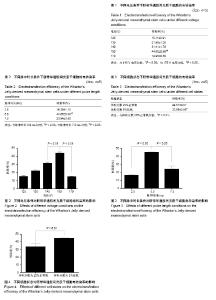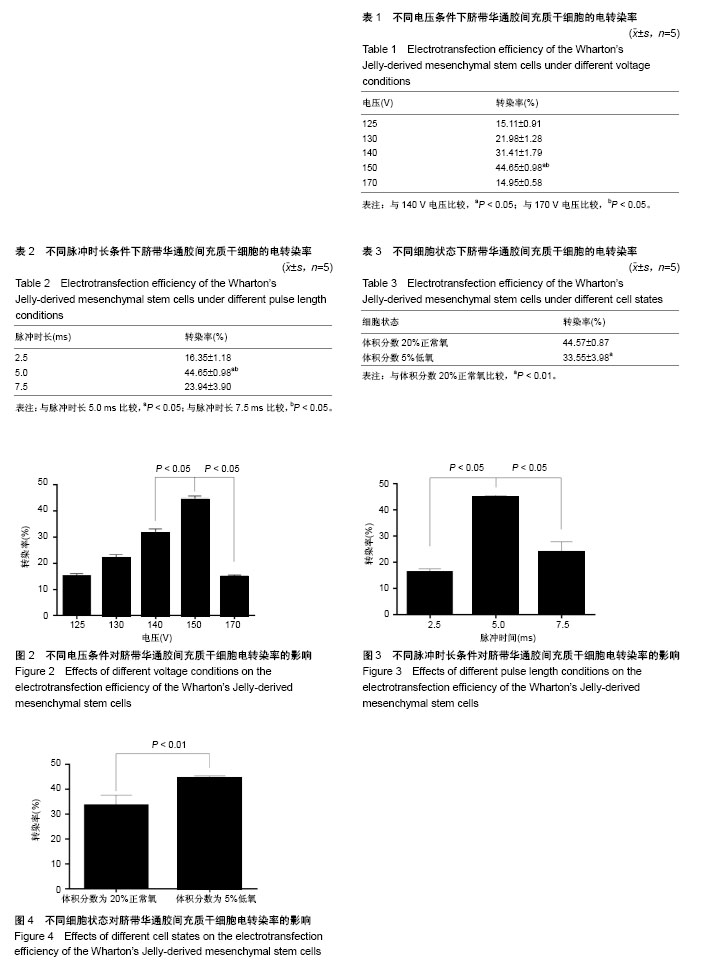| [1] Fu YS, Lu CH, Chu KA, et al. Xenograft of Human Umbilical Mesenchymal Stem Cells from Wharton's Jelly Differentiating into Osteocytes and Reducing Osteoclast Activity Reverses Osteoporosis in Ovariectomized Rats. Cell Transplant. 2018;27(1):194-208.[2] Udalamaththa VL, Jayasinghe CD, Udagama PV. Potential role of herbal remedies in stem cell therapy: proliferation and differentiation of human mesenchymal stromal cells. Stem Cell Res Ther. 2016;7(1): 110.[3] Ding DC, Chang YH, Shyu WC, et al. Human umbilical cord mesenchymal stem cells: a new era for stem cell therapy. Cell Transplant. 2015;24(3):339-347.[4] Sierra-Sanchez A, Ordonez-Luque A, Espinosa-Ibanez O, et al. Epithelial in vitro differentiation of Mesenchymal Stem Cells. Curr Stem Cell Res Ther. 2018 May 1. doi: 10.2174/1574888X13666180501120416. [Epub ahead of print][5] Merlo B, Teti G, Mazzotti E, et al. Wharton's Jelly Derived Mesenchymal Stem Cells: Comparing Human and Horse. Stem Cell Rev. 2018 Mar 5. doi: 10.1007/s12015-018-9803-3. [Epub ahead of print][6] Lo Iacono M, Anzalone R, La Rocca G, et al. Wharton's Jelly Mesenchymal Stromal Cells as a Feeder Layer for the Ex Vivo Expansion of Hematopoietic Stem and Progenitor Cells: a Review. Stem Cell Rev. 2017;13(1):35-49.[7] Joerger-Messerli MS, Marx C, Oppliger B, et al. Mesenchymal Stem Cells from Wharton's Jelly and Amniotic Fluid. Best Pract Res Clin Obstet Gynaecol. 2016;31:30-44.[8] Joshi KS, Bhonde R. Insights from Ayurveda for translational stem cell research. J Ayurveda Integr Med. 2014;5(1):4-10.[9] Batsali AK, Kastrinaki MC, Papadaki HA, et al. Mesenchymal stem cells derived from Wharton's Jelly of the umbilical cord: biological properties and emerging clinical applications. Curr Stem Cell Res Ther. 2013;8(2):144-155.[10] 冯一梅,徐辉. 间充质干细胞基因转染的相关研究现状[J]. 中国组织工程研究与临床康复,2007,11(11):2118-2121.[11] 张禾璇,何燕,张婷,等. HepG2细胞电转染条件的优化[J].山东医药, 2013, 53(42):1-4.[12] 钟翠丽,李国玲,莫健新,等.不同电转仪的电转参数、质粒用量和拓扑结构对猪胎儿成纤维细胞转染效率的影响[J]. 遗传, 2017, 39(10):930-938.[13] 张禾璇,单可人,何燕,等.脂质体法与电穿孔法转染两种细胞效率的比较[J].重庆医学, 2014,43(33):4432-4433.[14] 加三三,胡俊,李美宁,等.慢病毒转染和电转染原代C57BL/6小鼠神经干细胞的比较[J].中国现代医学杂志, 2017,27(6):6-9.[15] André F, Mir LM. DNA electrotransfer: its principles and an updated review of its therapeutic applications. Gene Ther. 2004;11 Suppl 1: S33-42.[16] Chicaybam L, Barcelos C, Peixoto B, et al. An Efficient Electroporation Protocol for the Genetic Modification of Mammalian Cells. Front Bioeng Biotechnol. 2017;4:99.[17] Mellott AJ, Godsey ME, Shinogle HE, et al. Improving viability and transfection efficiency with human umbilical cord wharton's jelly cells through use of a ROCK inhibitor. Cell Reprogram. 2014;16(2):91-97.[18] Gresch O, Engel FB, Nesic D, et al. New non-viral method for gene transfer into primary cells. Methods. 2004;33(2):151-163.[19] Ferreira E, Potier E, Logeart-Avramoglou D, et al. Optimization of a gene electrotransfer method for mesenchymal stem cell transfection. Gene Ther. 2008;15(7):537-544.[20] 钟翠丽,李国玲,莫健新,等.不同电转仪的电转参数、质粒用量和拓扑结构对猪胎儿成纤维细胞转染效率的影响[J].遗传, 2017, 39(10):930-938.[21] Durieux AC, Bonnefoy R, Busso T, et al. In vivo gene electrotransfer into skeletal muscle: effects of plasmid DNA on the occurrence and extent of muscle damage. J Gene Med. 2004;6(7):809-816.[22] Baum C, Forster P, Hegewisch-Becker S, et al. An optimized electroporation protocol applicable to a wide range of cell lines. Biotechniques. 1994;17(6):1058-1062.[23] Abdul Halim NS, Fakiruddin KS, Ali SA, et al. A comparative study of non-viral gene delivery techniques to human adipose-derived mesenchymal stem cell. Int J Mol Sci. 2014;15(9):15044-15060.[24] Liew A, André FM, Lesueur LL, et al. Robust, efficient, and practical electrogene transfer method for human mesenchymal stem cells using square electric pulses. Hum Gene Ther Methods. 2013;24(5):289-297.[25] Haleem-Smith H, Derfoul A, Okafor C, et al. Optimization of high-efficiency transfection of adult human mesenchymal stem cells in vitro. Mol Biotechnol. 2005;30(1):9-20.[26] 王晓军,崔连群,王敏,等.增强型绿色荧光蛋白基因电穿孔转染骨髓间充质干细胞的研究[J]. 中国组织化学与细胞化学杂志, 2005, 14(1):16-22.[27] 张平,赵钢勇,陈凯,等. 重组质粒pIRESneo-EGFP-BDNF构建及转染骨髓间充质干细胞[J]. 医学研究与教育,2012,29(1):7-11.[28] Helledie T, Nurcombe V, Cool SM. A simple and reliable electroporation method for human bone marrow mesenchymal stem cells. Stem Cells Dev. 2008;17(4):837-848.[29] Davies JE, Walker JT, Keating A. Concise Review: Wharton's Jelly: The Rich, but Enigmatic, Source of Mesenchymal Stromal Cells. Stem Cells Transl Med. 2017;6(7):1620-1630.[30] Lu LL, Liu YJ, Yang SG, et al. Isolation and characterization of human umbilical cord mesenchymal stem cells with hematopoiesis-supportive function and other potentials. Haematologica. 2006;91(8):1017-1026.[31] Ranjbaran H, Abediankenari S, Mohammadi M, et al. Wharton's Jelly Derived-Mesenchymal Stem Cells: Isolation and Characterization. Acta Med Iran. 2018;56(1):28-33.[32] Bharti D, Shivakumar SB, Park JK, et al. Comparative analysis of human Wharton's jelly mesenchymal stem cells derived from different parts of the same umbilical cord. Cell Tissue Res. 2018;372(1):51-65.[33] Nekanti U, Dastidar S, Venugopal P, et al. Increased proliferation and analysis of differential gene expression in human Wharton's jelly-derived mesenchymal stromal cells under hypoxia. Int J Biol Sci. 2010;6(5):499-512.[34] 宋希拿,孟恒星,张宇光,等. 低氧对人脐带间充质干细胞生物学特性及增殖的影响[J]. 生物医学工程与临床,2014,18(2):106-112.[35] Zhang Z, Qiu S, Zhang X, et al. Optimized DNA electroporation for primary human T cell engineering. BMC Biotechnol. 2018;18(1):4.[36] Wang W, Xu X, Li Z, et al. Genetic engineering of mesenchymal stem cells by non-viral gene delivery. Clin Hemorheol Microcirc. 2014;58(1):19-48. |

